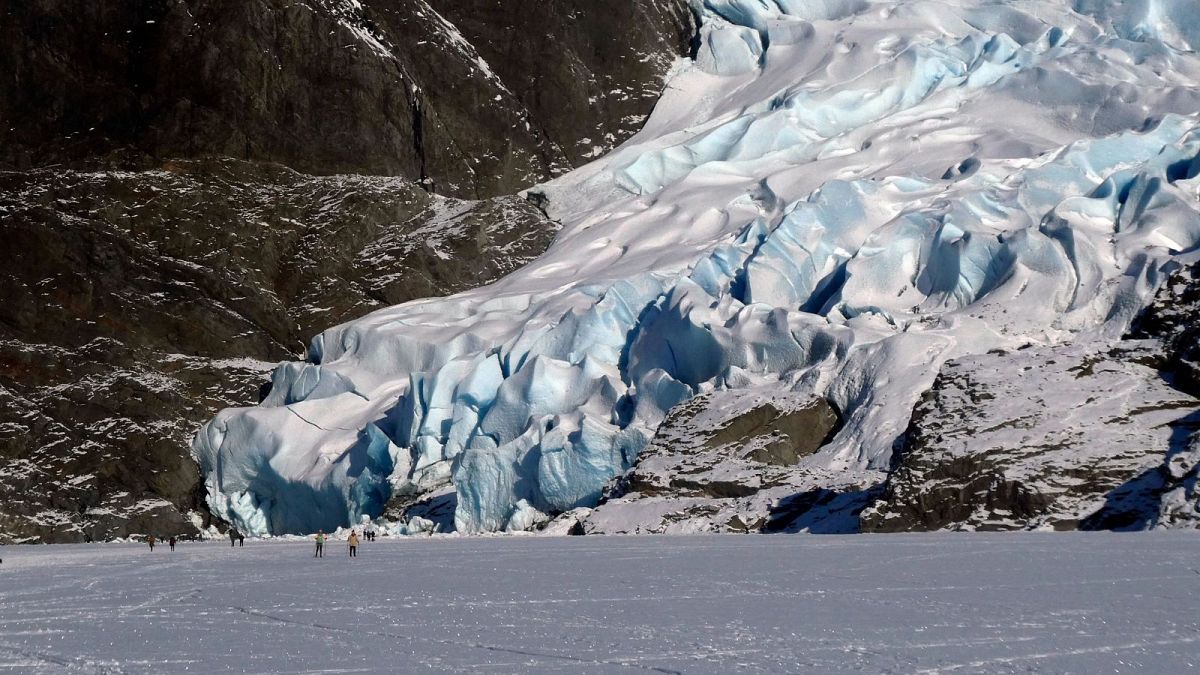The thawing of 7 trillion tonnes of glacial ice since has raised sea levels by almost 2 centimetres, with the Alps a melting hotspot.
Climate change is causing glaciers around the world to melt faster than ever recorded, a new scientific study has found.
These bodies of ice have shrunk by more than 5 per cent on average since 2000 – and at an accelerating rate in the past decade.
Scientists have long been aware that glaciers – indicators of human-caused climate change – are melting increasingly fast. But this new study, published in the journal Nature, draws together various findings for the most comprehensive look at the issue yet.
“Regions that have had glaciers since time immemorial are losing these icons of ice,” says Tyler Sutterley, a senior research scientist in the Polar Science Center at the University of Washington. Sutterly is one of the study’s authors from a global consortium of hundreds of researchers called the Glacier Mass Balance Intercomparison Exercise (GlaMBIE).
Unprecedented glacier melt is leading to a raft of disasters, the GlaMBIE team explain, jeopardising freshwater resources for millions of people, and raising sea levels with catastrophic results.
How quickly are glaciers melting?
Since the turn of the century, glaciers have shed more than 6,500 billion tonnes (5 per cent) of ice – roughly 270 billion tonnes a year.
To put that into perspective, lead author of the study Michael Zemp tells BBC News that 270 billion tonnes of ice is the same as the water consumption of the entire global population in 30 years, assuming each person uses three litres a day.
As greenhouse gas emissions rise, the process is speeding up. Between 2000 and 2011, these frozen rivers melted at a rate of around 231 billion tonnes of ice per year on average, the team found.
This melt rate increased between 2012 and 2023 to 314 billion tonnes per year, an acceleration of more than a third. 2023 saw a record loss of mass of around 548 billion tonnes.
Glacier mass loss is about 18 per cent larger than the loss from the Greenland Ice Sheet and more than twice that from the Antarctic Ice Sheet, the researchers note.
The Alps are losing their glaciers faster than any other region, with nearly 40 per cent gone since 2000. The Middle East, New Zealand and western North America have also suffered glacier reductions of more than 20 per cent.
How has glacier melt contributed to sea level rise?
The thawing of nearly 7 trillion tonnes of glacial ice since 2000 has raised sea levels by almost 2 centimetres.
That makes glacier melt the second biggest contributor to sea level rise, after the expansion of water due to warming oceans, with catastrophic consequences.
“Every centimetre of sea-level rise exposes another 2 million people to annual flooding somewhere on our planet,” Professor Andy Shepherd, head of the Department of Geography and Environment at Northumbria University in the UK, told the BBC.
Global sea levels have already risen by more than 10 cm since 1992, according to NASA, with faster increases expected in the coming decades.
Due to ‘baked in’ climate change, glaciers will continue to melt in the years ahead even with more ambitious efforts to slow global warming, as they respond slowly to the changing climate.
However, the way humans respond to the climate crisis will still have an enormous impact on their existence. Climate action could be the difference between losing a quarter of the world’s glacier ice, and nearly half if business as usual continues, the study urges.
“Every tenth of a degree of warming that we can avoid will save some glaciers, and will save us from a lot of damage,” Prof Zemp adds.

